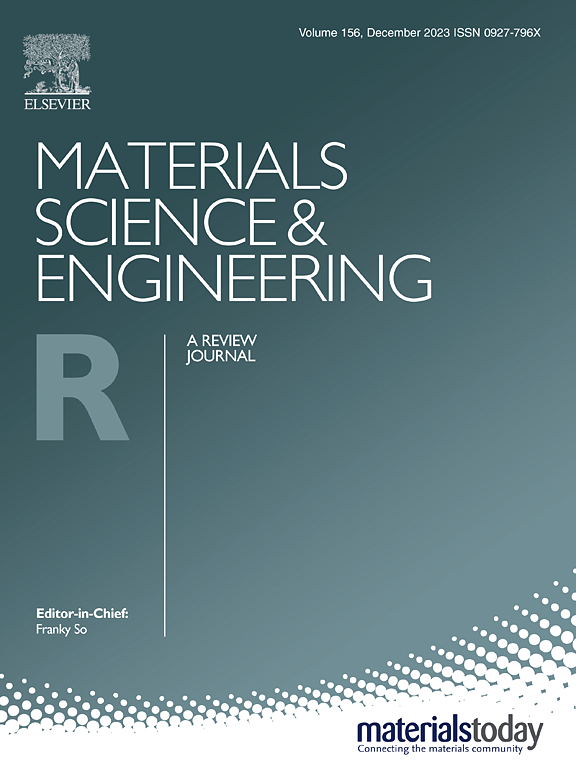柔性全向传感器的材料科学与工程进展
IF 31.6
1区 材料科学
Q1 MATERIALS SCIENCE, MULTIDISCIPLINARY
引用次数: 0
摘要
随着智能电子技术的快速发展,柔性全向传感器由于能够检测多个方向的复杂运动而备受关注,作为信息采集和传输的重要电子元件,为医疗健康监测、物联网、人工智能等领域提供了一种简单可行的检测工具。为了提高全向信号监测的准确性和实时性,研究人员正在从材料、设计、柔性电子等多角度积极探索柔性全向传感技术。本文系统地探讨了传感材料与柔性全向传感器之间的复杂关系。首先,我们讨论了材料结构、组成和性能对柔性全向传感器性能的影响。然后,我们的综合分析涵盖了广泛的传感材料,包括金属基材料,碳基材料和导电复合材料。接下来,我们深入研究了尖端的制造技术,如丝网印刷、3D打印和静电纺丝,并讨论了这些方法如何从材料的角度创建高分辨率、可设计的图案。总结了柔性全向传感器在生理信号监测、运动辅助、环境监测和人工智能等方面的主要应用场景。最后,讨论了柔性传感材料在柔性全向传感器领域的应用挑战和前景。本文章由计算机程序翻译,如有差异,请以英文原文为准。
Recent progress in materials science and engineering towards flexible omnidirectional sensor
With the rapid development of intelligent electronic technology, flexible omnidirectional sensors attract considerable interest due to their capability to detect complex motions in multiple directions, providing a simple and feasible detection tool in the fields of medical health monitoring, Internet of Things, and artificial intelligence by being an important electronic component for information acquisition and transmission. Researchers are actively exploring flexible omnidirectional sensing technology from multidimensional angles, encompassing materials, design, and flexible electronics, to enhance the accuracy and real-time performance of omnidirectional signal monitoring. Here, our review systematically explores the intricate relationship between sensing materials and flexible omnidirectional sensors. First, we discuss the influence of material structure, composition, and properties on the performance of flexible omnidirectional sensors. Then, our comprehensive analysis encompasses a wide range of sensing materials, including metal-based materials, carbon-based materials, and conductive composites. Following, we delve into cutting-edge manufacturing techniques such as screen printing, 3D printing, and electrospinning, and discuss how these methods enable the creation of high-resolution, designable patterns from a materials perspective. Furthermore, we summarize the main application scenarios of flexible omnidirectional sensors in physiological signal monitoring, motion assistance, environmental monitoring, and artificial intelligence. Finally, we discuss the application challenges and prospects of flexible sensing materials in the field of flexible omnidirectional sensors.
求助全文
通过发布文献求助,成功后即可免费获取论文全文。
去求助
来源期刊

Materials Science and Engineering: R: Reports
工程技术-材料科学:综合
CiteScore
60.50
自引率
0.30%
发文量
19
审稿时长
34 days
期刊介绍:
Materials Science & Engineering R: Reports is a journal that covers a wide range of topics in the field of materials science and engineering. It publishes both experimental and theoretical research papers, providing background information and critical assessments on various topics. The journal aims to publish high-quality and novel research papers and reviews.
The subject areas covered by the journal include Materials Science (General), Electronic Materials, Optical Materials, and Magnetic Materials. In addition to regular issues, the journal also publishes special issues on key themes in the field of materials science, including Energy Materials, Materials for Health, Materials Discovery, Innovation for High Value Manufacturing, and Sustainable Materials development.
 求助内容:
求助内容: 应助结果提醒方式:
应助结果提醒方式:


